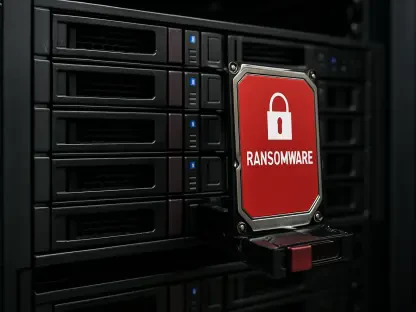The world of work has undergone a significant transformation with the rise of hybrid work models, revolutionizing the way organizations operate and presenting new challenges for IT and security teams. As employees increasingly work from diverse locations, safeguarding company data while ensuring a seamless work experience demands innovative solutions that can effectively address the complexities of this new landscape. The traditional security approaches, which were once sufficient, now fall short in providing the necessary protection and productivity in a hybrid work environment. Consequently, organizations are compelled to rethink their security strategies to adapt to these changes and ensure a cohesive hybrid workforce.
The Dissolution of the Traditional Workplace Perimeter
The traditional security perimeter, which used to be centered around a fixed corporate office, has become obsolete in the evolving work environment where employees are no longer confined to a single location. Employees now find themselves working from home offices, co-working spaces, coffee shops, and other remote settings, making it difficult to maintain a consistent security standard. According to the Pew Research Center, approximately 22 million employed adults in the U.S. work from home daily, and over one-third of U.S. workers who can work remotely do so all the time, with 41% working remotely part of the time.
As companies expand through mergers, acquisitions, or opening new branch offices, they must ensure that these new locations are secure and provide a consistent experience for all employees. The significant amount of work conducted within web browsers presents a noteworthy security challenge, as evidenced by Palo Alto Networks’ survey of 500 security leaders, revealing that employees spend over 85% of their workday in the browser. Unfortunately, browsers are vulnerable to various threats, such as account takeover attacks, phishing attacks, malicious extensions, and malware infections. This shift underscores the need for organizations to rethink their security strategies and adopt innovative solutions that address these emerging challenges.
The Need for a Holistic Security Approach
Organizations must adopt a holistic approach to securing the work environment across all access points, whether remote or on-premises, to effectively safeguard their data and ensure seamless operations. The current scenario involves many companies juggling multiple secure access tools with different policies, network sensors, and management planes, resulting in tool sprawl. This complexity makes it challenging to maintain unified network security, consistent policies, and a comprehensive view of network activities, often leading to security gaps, inadequate data protection, and inconsistent application performance.
For organizations to operate effectively in this new landscape, they need a solution that provides an optimized experience with consistent security policies across all access points. Employees expect flexibility in terms of the devices they use, while employers must provide secure access to company resources to maintain productivity. An integrated SASE (secure access service edge) solution is presented as the ideal answer to these challenges. With proper implementation of SASE, organizations can enforce security visibility and control from any device to any application, ensuring that consistent security standards are maintained across the board.
The Role of SASE and SD-WAN in Hybrid Work Security
SASE solutions are rooted in zero trust principles, ensuring that all access to SaaS, web, or other apps is continuously authenticated and authorized, verifying users and devices before granting access to corporate applications. Focusing solely on managed devices is insufficient in today’s hybrid work environment. A comprehensive SASE solution must extend protections to the browser, where users and data intersect most frequently, ensuring that personal devices are secured to the same standard as corporate-managed devices. This approach allows employees to maintain a secure work environment on any device, isolating enterprise apps from untrusted endpoints and broadening the scope of security to address evolving threats.
SD-WAN (software-defined wide area network) plays a crucial role within the SASE framework, ensuring that every “branch” achieves optimal performance across multiple links with consistent security. By incorporating security measures into the browser, companies can address critical use cases such as third parties and contractors, the BYOD workforce, additional data loss controls, and securing undecryptable traffic. This approach creates a defense-in-depth strategy, layering multiple security controls from the secure enterprise browser to the network, resulting in enhanced protection against a wide range of threats and increased resiliency.
Ensuring Consistency and Security in Application Access
The work landscape has experienced a dramatic shift thanks to the rise of hybrid work models, fundamentally changing how businesses operate and introducing new challenges for IT and security professionals. As more employees work from various locations, protecting company data while maintaining a smooth work experience requires innovative solutions that can tackle the complexities of these changes. Traditional security measures, once deemed adequate, are now insufficient for providing the necessary protection and productivity in a hybrid setting. As a result, organizations must re-evaluate and update their security strategies to adapt to this evolving work environment. This ensures a cohesive hybrid workforce that can operate securely and efficiently, regardless of where employees are located. Embracing these new approaches is essential for addressing the unique requirements and challenges posed by hybrid work, ultimately allowing companies to thrive in this new era of flexible work arrangements.









